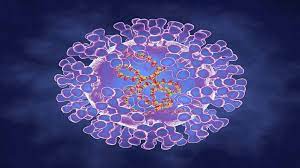New cases of monkeypox were reported in the U.K., Spain, Portugal, Italy, and the U.S. this week, a rare occurrence for a virus largely confined to central and western Africa.
The U.S. reported its first monkeypox case of the year on Wednesday: a man in Massachusetts. New York City’s health department said on Thursday that it is investigating a possible case as well. In the U.K., nine cases have been detected since the beginning of May. As of Thursday, Italy has confirmed one recent case, Portugal has confirmed 14, and Spain has seven, along with 22 suspected cases. France reported a suspected case on Thursday too.
“This is the most important outbreak in the history of monkeypox in the Western Hemisphere,” said Anne Rimoin, an epidemiology professor at UCLA Fielding School of Public Health.
“The last time the Western Hemisphere saw a monkeypox outbreak of this magnitude was in 2003, she said, when the U.S. identified 47 cases.”
“Those patients had been in contact with infected pet prairie dogs, and none died. But disease experts haven’t pinpointed precisely how the virus is currently spreading.”
“What we’re facing right now seems to be at least a subset of cases that don’t have any history of travel to one of those countries in Africa where the monkeypox virus naturally occurs, and also don’t report any exposure to someone who has been diagnosed with monkeypox. So what we’re seeing right now is unusual,” said Dr. Agam Rao, a medical officer at the Centers for Disease Control and Prevention’s Division of High Consequence Pathogens and Pathology.
“Although monkeypox does not spread easily between people, the CDC is preparing for additional cases in the U.S., Rao said.”
“We are telling people this is an emerging issue,” she said. “Some emerging issues end up becoming benign in the end. Other ones escalate. As an emerging issue, we’re asking people to keep it top of mind at the moment.”
What is monkeypox?
“Monkeypox belongs to the family of poxviruses, which includes smallpox. The disease got its name after scientists discovered it among laboratory monkeys in 1958. The first monkeypox case in a human was diagnosed in 1970.”
Since then, most infections have been concentrated in the Democratic Republic of the Congo and Nigeria. The DRC reports thousands of cases annually and Nigeria has reported more than 200 confirmed cases and more than 500 suspected ones since 2017.
The type of monkeypox identified in the recent U.S. and European cases tends to produce milder disease than the other common branch of the virus.
“All of the virus strains that we’re aware of among all of these cases that have occurred in the last two weeks are the West African clade. The West African clade of monkeypox is much more benign than the Congo Basin clade,” Rao said. “That’s good news in that, hopefully, there will not be a lot of bad things clinically that happen to people who might be infected.”
Around 1 percent of people who contract the West African clade die, compared to up to 10 percent of people who contract the Congo Basin clade, according to the World Health Organization.
Rao said people who get the West African clade “typically recover pretty well” and go “back to their regular lives when it’s over.”
How do you get monkeypox?
Humans can get monkeypox from animals, either through bites or scratches or from preparing meat from wild game, according to the CDC.
Person-to-person transmission can occur through the exchange of large respiratory droplets during prolonged face-to-face contact. People can also get exposed through direct contact with bodily fluids, the lesions that form during an infection, or contaminated items like clothing or bedding.
Many of the newly identified cases in Europe are among men who have sex with men, but monkeypox is not considered a sexually transmitted infection.


